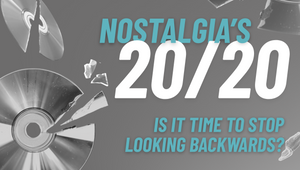
How to Achieve Physical Success in an Increasingly Digitally Obsessed World

The world is becoming more technological. It’s affecting all of us and the general tone is uncertain and fearful.
Meanwhile, online has delivered greater speed, transparency, novelty, and sheer volume of content.
We now face a paradox: just at the point that customer brand expectations have never been higher, customer attention spans have shrunk.
It’s unclear exactly how this will affect live experiences and the question we hear repeatedly from clients: is technology a threat?
No. We see it as a huge opportunity for growth.
The fusion of technology and live activations will lead to enhanced experiences creating more memorable moments – from AR adding new layers to what we ‘see’, to haptic technology immersing us deeper into an experience, and an exciting raft of emerging new tech products yet to be applied.
Here are our thoughts on the power of the new language of immersive activations. And four steps in driving successful IRL experiences in our digitally obsessed world.
1. Be Part of the Relay Race: support digital handing the baton to live experience to fuel brand growth
Brands delivering e-commerce have become more and more seamless. Online digital is successful at creating brand recognition, degrees of brand personality, calls to action and product understanding, whether through retail showrooms or valuable peer reviews. It’s working…people are buying stuff!
Yet, online brands are severely limited when the brand wants to move from product purchase to repeat purchase - the ‘tangibility’ factor is often lost e.g. touching, feeling, seeing the product and absorbing the brand story. This is less prevalent for marketplaces like Amazon – but truer of brand-owned portals.
This is where the live world can truly shine.
Live experiences have always delivered superior brand advocacy and loyalty, dramatic product launches and that sense of fun so difficult to achieve online.
A single moment in live time brings exclusivity, drives FOMO, delivers a pre-selected, primed audience, creates content for social storytelling, and crucially delivers a much longer dwell time - 14 minutes per person compared to a three-second doom scroll.
The good news - combine online and face-to-face for a cycle of brand immersion, brand loyalty and repeat purchase. Genius.
2. Fuel Immersive Expectations
This is where things get interesting, when live makes truly emotive connections through atmospheric, sensorial and immersive places.
New immersive spaces are popping up – Frameless, Outernet, Lightroom in London, The Sphere in Vegas, and soon similar in South Korea and Abu Dhabi. If you’ve visited – you will likely leave with a sense of 'wow, that was amazing'. And you’d be right.
However, content on these huge canvases, beautifully impressive, has so far been style over substance. There’s a way to go and as more these immersive experiences appear, more people will visit, and customer expectations will rise when engaging with brands.
So, there’s enormous potential for brands to take innovative technology and use it to educate, empower, interact, and delight.
3. Human Touch Creates Trust
We see online spaces becoming increasingly associated with a lack of trust – deep fakes, vote rigging. Sora is coming – seeing is not necessarily believing and this may impact the integrity and authenticity of brands online.
The fact is- feeling and experiencing brands in real life offers tangible belief. You simply can’t fake the real product in front of you.
And it’s our job to maximise that physical presence, however possible.
A unique feeling experience can be large and deliver wonder and awe or it can be small, intimate, almost invisible where brand assets inspire and add layers of dynamism, rhythm and mystery.
Our own inspiration often comes from the world of immersive and interactive art installations and the ‘edutainment’ of modern museums. A recent activation for healthcare client Randox saw people catching as many blood platelets (foam balls) as possible in 30 seconds, in an enclosed wind tunnel, to explain how its testing kits work.
4. Purpose Becomes Magical at the Intersection of Technology and Message
When technology and message combine there is purpose to the experience that goes well beyond immersion. If it feels intuitive –rather than simply ‘technology for technology’s sake’ – it becomes a much more powerful experience.
It leads to that a powerful feeling of delight – when people stop questioning whether it’s a ‘brand sell’ and relish the moment for what it is – an engaging experience.
It’s our belief that audience experience and engagement principles haven’t changed: we still strive to create a journey linked to a narrative arc, starting with expectation and ending with memory. The world of entertainment does this brilliantly and is a constant source of inspiration – think PunchDrunk, SecretCinema or PhantomPeak.
Summary
The future is exciting, and it’s creatively driven. With the language of this new world already here, it’s up to all of us to start designing the experiences that this language supports.
For shorthand we’ve been calling this ‘Live2.0’ - not as a trademarked product or even an original idea. It may seem a little corny, but we’ve found it powerful as an internal mantra in our conversations to drive bigger and bolder ideas and ensure that brands can forever exist and thrive beyond a smartphone screen.















